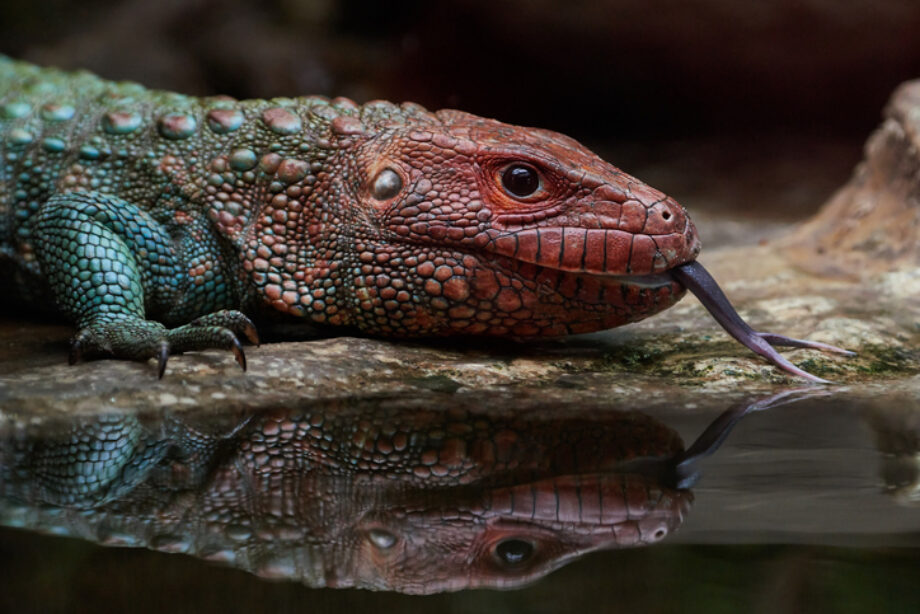Caiman lizards are found in Ecuador, Colombia, Brazil, Peru, and the Guianas. They live in swampy habitats or other flooded woodlands – where they spend most of their time basking on low branches and roots overhanging marshes, flooded forests and streams. This allows them to make quick escapes from sudden danger by dropping themselves into the water.
Jaguars, snakes and crocodiles prey on these lizards, however; they have few other predators in the wild. Their ability to both climb and swim helps them avoid danger.

The caiman lizard are carnivorous and they feed primarily on invertebrates – such as snails, crawfish and freshwater clams. They are also known predators of Amazon river turtles. Once a prey item is caught, the lizard raises its head, moving the meal into position at the back of its powerful jaws. Then, it crushes the animal with its strong back teeth, spits out the broken shell and consumes the softer part of its prey.
Females lay five to seven fertilized eggs per clutch, with an incubation period of about 179 days (around 6-7 months). They lay their eggs in holes in the riverbank and then they cover it. Hatchlings are born independent, requiring no prenatal care.
